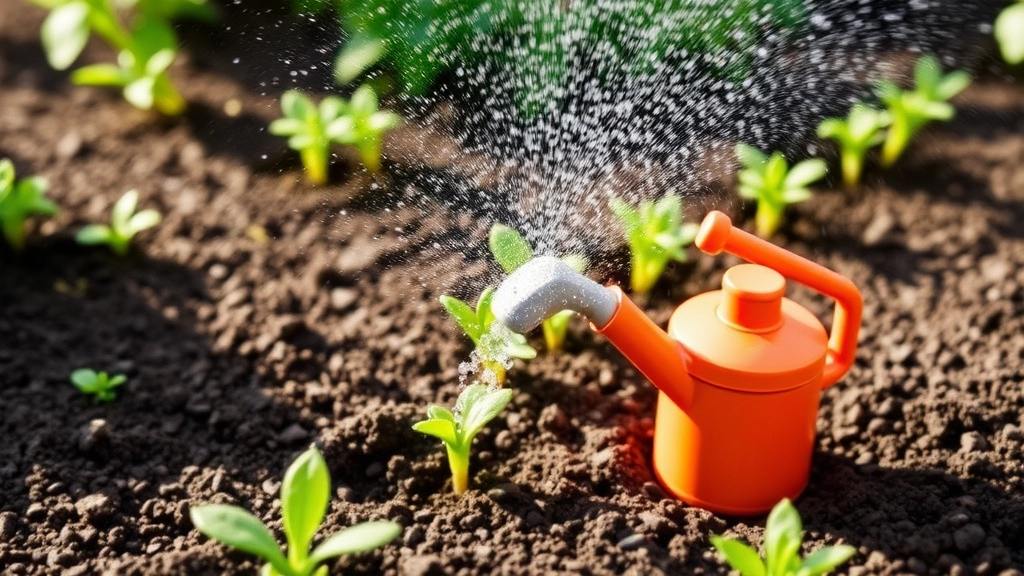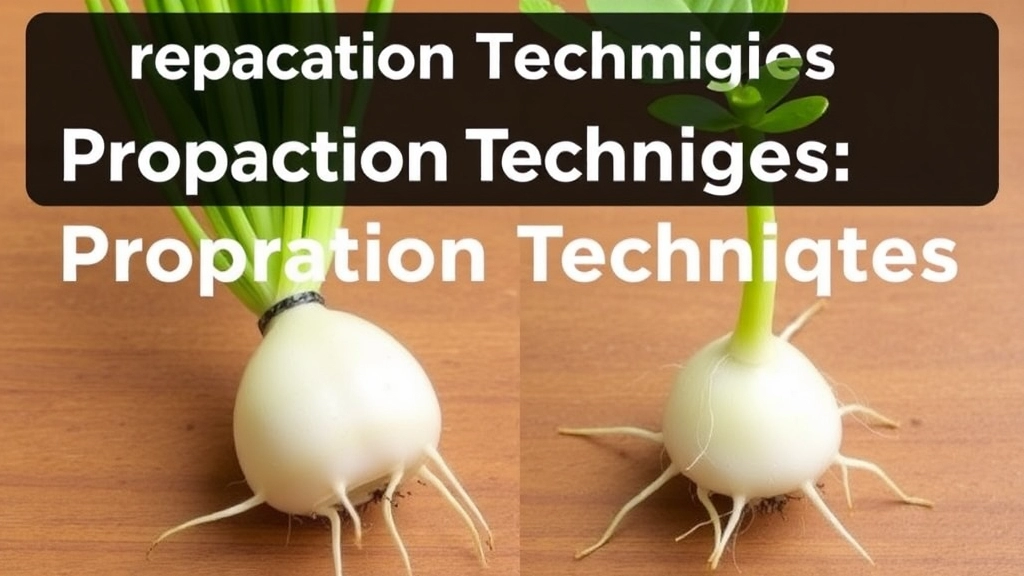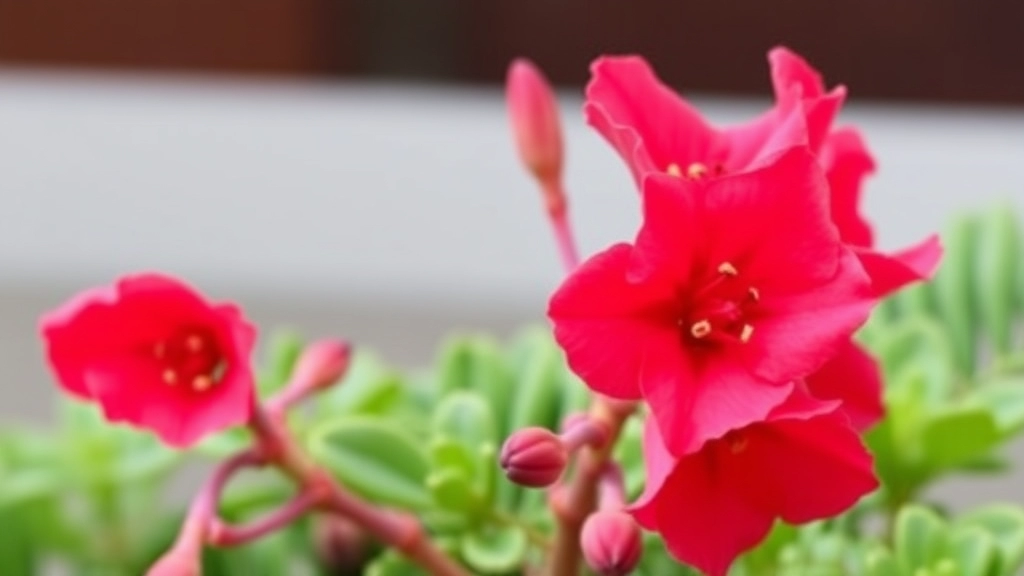Keeping Your Kalanchoe Red Lips Thriving
Looking to keep your Kalanchoe Red Lips thriving? This succulent, known for its striking red-edged leaves, needs the right care to stay vibrant. Start with ideal lighting—bright, indirect sunlight is perfect. Too much direct sun can scorch the leaves, while too little light will dull their colour.
Watering is crucial; overwatering is a common mistake. Let the soil dry out between waterings to avoid root rot. Use well-draining soil to keep the roots healthy and consider a cactus mix for optimal growth. With these simple steps, your Kalanchoe Red Lips will flourish beautifully.
Ideal Lighting for Kalanchoe Red Lips
Are you struggling to find the perfect lighting for your Kalanchoe Red Lips?
This succulent thrives in bright, indirect sunlight, making it essential to position it correctly for optimal growth.
Key Lighting Tips:
- Bright, Indirect Sunlight: Place your Kalanchoe near a window where it can receive plenty of light without being scorched by direct rays.
- Avoid Low Light: Insufficient light can lead to leggy growth and dull leaf colour. If your plant starts stretching towards the light, it’s a sign it needs more brightness.
- Rotate Periodically: To ensure even growth, rotate your plant every few weeks. This helps all sides receive equal light exposure.
- Supplemental Lighting: If natural light is limited, consider using grow lights. They can provide the necessary brightness, especially during darker months.
By ensuring your Kalanchoe Red Lips receives the right amount of light, you’ll set the stage for vibrant growth and stunning red edges. For more detailed care tips, check out our ultimate guide for healthy growth and our comprehensive guide to caring for Kalanchoe succulents.
Watering Requirements: How to Avoid Overwatering

Ever find yourself wondering if you’re giving your Kalanchoe Red Lips too much love in the form of water? You’re not alone! Overwatering is one of the most common issues that plant lovers face. Let’s break it down.
Understanding When to Water
- Check the Soil: Before you even think about watering, poke your finger about an inch into the soil. If it feels dry, it’s time to water. If it’s still moist, hold off for a bit.
- Watering Schedule: Generally, Kalanchoe Red Lips prefers to dry out between waterings. In the growing season (spring and summer), you might find yourself watering every 1-2 weeks. In the winter, cut back significantly—maybe once a month.
Signs of Overwatering
- Yellowing Leaves: If your leaves are turning yellow and feeling mushy, it’s a clear sign you’re overdoing it.
- Root Rot: If you notice a foul smell when checking the roots, it might be time to rescue your plant.
Tips to Avoid Overwatering
- Use Well-Draining Soil: A mix designed for succulents can work wonders. It allows excess water to escape, keeping your roots happy.
- Choose the Right Pot: Ensure your pot has drainage holes. This is crucial! Without them, water can get trapped, leading to root rot.
- Adjust for Seasons: Remember, your plant’s needs change with the seasons. Always be ready to tweak your routine.
Best Soil Mix for Healthy Growth
When it comes to nurturing your Kalanchoe Red Lips, the right soil mix is crucial for ensuring healthy growth.
Many plant enthusiasts often wonder, “What type of soil will help my Kalanchoe thrive?”
To keep your plant vibrant and robust, consider the following components for an ideal soil mix:
- Well-Draining Soil: Kalanchoe Red Lips prefers soil that drains well. A mix designed for succulents is often a perfect fit.
- Cactus Mix: A pre-packaged cactus or succulent mix can provide the right balance of drainage and nutrients.
- Perlite or Pumice Addition: Adding perlite or pumice can enhance aeration and drainage, preventing root rot.
- Organic Matter: A small amount of organic matter, like compost, can provide essential nutrients without compromising drainage.
- pH Level: Aim for a slightly acidic to neutral pH (around 6.0 to 7.0) for optimal growth.
Creating the right soil mix not only supports your Kalanchoe Red Lips but also sets the stage for the next crucial aspect of care: watering requirements.
For more detailed care tips, you can check out our ultimate guide to growing and caring for succulent plants.
Temperature and Humidity Preferences

When caring for your Kalanchoe Red Lips, understanding its temperature and humidity preferences is crucial for thriving growth.
Ideal Temperature Range
Kalanchoe Red Lips thrives in a warm environment. Here’s what you need to know:
- Daytime Temperature: Ideally between 20°C to 25°C.
- Nighttime Temperature: Should not drop below 10°C.
- Avoid Sudden Changes: Keep your plant away from drafts and extreme temperature fluctuations.
Humidity Levels
Humidity plays a significant role in the health of your Kalanchoe:
- Optimal Humidity: This plant prefers low to moderate humidity levels, around 40% to 60%.
- Avoid High Humidity: Excess moisture can lead to fungal diseases.
Tips for Maintaining Ideal Conditions
- Location: Place your Kalanchoe Red Lips in a bright spot, but avoid direct sunlight during the hottest part of the day.
- Heating: If you have central heating, ensure that your plant is not positioned too close to heat sources.
- Humidity Control: If your home is dry, consider using a pebble tray with water to increase humidity without saturating the soil.
Fertilizing Kalanchoe Red Lips: When and How Often
Are you unsure about how to keep your Kalanchoe Red Lips thriving with the right nutrients?
Fertilizing is a key aspect of maintaining healthy growth and vibrant colours in your plant.
How to Handle Pests and Common Diseases

So, you’ve got your Kalanchoe Red Lips thriving, but what happens when those pesky pests or diseases come knocking?
Common Pests:
- Mealybugs: These little white cotton-like bugs love to hide in the leaf joints.
- Spider Mites: Tiny and hard to spot, they leave webbing and cause yellowing leaves.
- Aphids: Small and green, they suck the sap from your plant, leading to stunted growth.
Common Diseases:
- Root Rot: Overwatering can lead to this sneaky issue. Watch for mushy roots!
- Powdery Mildew: A white, powdery substance that can appear on leaves, usually due to high humidity.
Quick Tips for Pest Control:
- Inspect Regularly: Make it a habit to check your plant weekly. A little prevention goes a long way.
- Neem Oil: This natural remedy works wonders. Just mix it with water and spray on affected areas.
- Insecticidal Soap: Great for mealybugs and aphids. Apply as per instructions on the label.
Disease Management:
- Water Wisely: Always let the soil dry out between waterings. This keeps root rot at bay.
- Good Airflow: Ensure your plant isn’t crowded. This helps reduce humidity and prevents powdery mildew.
When to Act:
If you spot pests or signs of disease, don’t wait. Take action immediately to prevent spreading.
Pruning and Shaping Tips for Kalanchoe Red Lips
As we delve deeper into the care of Kalanchoe Red Lips, pruning and shaping become essential practices to maintain its health and aesthetic appeal.
Why Prune?
You might wonder why pruning is necessary for your Kalanchoe.
Pruning helps:
- Encourage Growth: Removing dead or wilted leaves allows the plant to focus energy on new growth.
- Maintain Shape: Regular trimming keeps your plant looking tidy and well-formed.
- Prevent Overcrowding: Ensures that light reaches all parts of the plant, promoting even growth.
When to Prune
The best time to prune your Kalanchoe Red Lips is during its active growing season, typically in spring or early summer.
Propagation Techniques: Growing from Cuttings and Offsets

So, you’re keen on expanding your Kalanchoe Red Lips collection? Great choice! Propagation is a fun way to do just that, and it’s easier than you might think.
Cuttings: A Simple Method
- Choose a Healthy Stem: Look for a healthy, plump stem on your Kalanchoe. It should be free from any pests or diseases.
- Make the Cut: Using clean, sharp scissors, cut a stem about 4-6 inches long. Aim for a cut just below a leaf node.
- Let It Callous: Place the cutting in a warm, dry spot for a few hours or overnight. This helps the cut end callous over, reducing the risk of rot.
- Plant It: Once calloused, stick the cutting in a well-draining soil mix. Water it lightly, just enough to settle the soil around it.
- Provide Light: Place your new cutting in bright, indirect light. Avoid direct sunlight until it establishes roots.
- Water Sparingly: Keep the soil slightly moist but not soggy. Too much water can lead to rot.
Offsets: Nature’s Gift
- Identify Offsets: Kalanchoe Red Lips often produce small offsets or pups at the base. These are mini versions of the parent plant.
- Gently Remove: When the offset is a few inches tall, gently twist or cut it away from the parent plant. Make sure it has some roots attached.
- Let It Dry: Just like with cuttings, allow the offset to dry and callous for a few hours.
- Plant and Care: Plant it in a well-draining mix, water lightly, and place in bright, indirect light.
Tips for Success
- Be Patient: It can take a few weeks for cuttings and offsets to root. Don’t rush it!
- Keep an Eye Out: Watch for signs of growth, like new leaves or roots poking through the soil.
- Experiment: Try propagating at different times of the year. You might find that your plant responds better in certain conditions.
Seasonal Care: Adjusting for Winter and Summer
As we transition through the seasons, it’s crucial to adapt our care for Kalanchoe Red Lips to ensure they thrive year-round. Many plant owners often worry about how changing temperatures and light conditions can affect their beloved succulents.
Summer Care
During the summer months, Kalanchoe Red Lips benefits from increased light and warmth. Here’s how to provide optimal care:
- Light Exposure: Position your plant in a spot that receives bright, indirect sunlight. Too much direct sun can scorch the leaves.
- Watering: Increase watering frequency, but always check the soil first. Allow the top inch to dry out before giving it a drink.
- Humidity: Kalanchoe prefers lower humidity levels. Ensure good air circulation around the plant to prevent fungal issues.
- Fertilizing: Consider fertilising every 4-6 weeks with a balanced, diluted fertiliser during the growing season.
Winter Care
As winter approaches, the needs of your Kalanchoe Red Lips shift significantly. Here’s what to keep in mind:
Repotting Kalanchoe: How and When to Do It
So, you’re thinking about repotting your Kalanchoe Red Lips? You’re not alone! Many plant lovers wonder when the right time is to give their beloved succulents a new home.
When to Repot
Timing is key! Here’s when you should consider repotting:
- Spring or Early Summer: This is the best time as the plant is actively growing.
- Every 1-2 Years: Check if the roots are outgrowing the pot or if the soil looks depleted.
- Signs of Stress: If you notice yellowing leaves or stunted growth, it might be time for a change.
How to Repot
Repotting doesn’t have to be a stressful ordeal. Here’s a simple step-by-step guide:
- Choose the Right Pot: Aim for one that’s slightly larger than the current pot. Ensure it has drainage holes.
- Prepare Fresh Soil: Use a well-draining soil mix, ideally a cactus or succulent blend.
- Gently Remove the Plant: Carefully loosen the plant from its old pot. Don’t yank it out; you want to keep as much soil around the roots as possible.
- Inspect the Roots: Trim any brown or mushy roots. Healthy roots should be white or light tan.
- Place in New Pot: Position your Kalanchoe in the centre and fill with fresh soil, ensuring the base of the plant is level with the soil surface.
- Water Sparingly: After repotting, wait a week before watering to allow the roots to settle.
Tips for Success
- Avoid Overpotting: A pot too big can lead to excess moisture, which your Kalanchoe won’t like.
- Keep It Clean: Make sure your tools and new pot are clean to avoid any diseases.
- Give It Time: After repotting, your plant might need a little time to adjust. Don’t worry if it looks a bit droopy at first!
Maximizing Leaf Color: Tips for Vibrant Red Edges
As we delve into the specifics of caring for Kalanchoe Red Lips, one common concern arises: how can you enhance the vibrant red edges of the leaves? This striking feature is a hallmark of the plant, and with the right techniques, you can ensure those colours pop.
How to Deal with Blooming and Flower Care
So, you’ve got a Kalanchoe Red Lips, and it’s ready to bloom. Exciting, right? But blooming can come with its own set of challenges. Let’s chat about how to manage those beautiful flowers while keeping your plant healthy.
Understanding the Blooming Cycle
Kalanchoe Red Lips usually blooms in the winter or early spring. Here’s what you need to know:
- Light: Ensure it gets plenty of bright, indirect light to encourage those flowers.
- Watering: Cut back a bit on watering during the blooming phase. Too much moisture can lead to droopy flowers.
- Temperature: Keep it in a warm spot; they love temperatures around 20-22°C (68-72°F).
Caring for the Blooms
Once those flowers start to pop, you’ll want to give them a little extra love:
- Deadheading: Snip off spent flowers to encourage new blooms. Use clean scissors to avoid any infections.
- Humidity: Kalanchoe isn’t a fan of high humidity, so keep the air dry to prevent mould on the flowers.
- Fertilizer: A balanced fertiliser can help, but don’t overdo it. Once a month during blooming is usually enough.
Post-Bloom Care
After the flowers have faded, it’s time to shift gears:
- Pruning: Trim back the stems where the flowers were to promote new growth.
- Rest Period: Give your plant a little rest. Reduce watering and let it recover before the next blooming cycle.
- Light Adjustment: Once blooming is done, you can move it to a slightly less bright spot.
Taking care of your Kalanchoe Red Lips during its blooming phase can be a rewarding experience. You’ll not only enjoy the vibrant flowers but also keep your plant thriving. For more detailed tips, you might want to check out this Kalanchoe Flowering Season Blooming Tips and Care Guide and learn about Pruning Kalanchoe Plants to keep your plant in top shape.
FAQs on Kalanchoe Red Lips Care
How often should I water my Kalanchoe Red Lips?
Generally, water every 1-2 weeks during the growing season (spring and summer). In the winter, cut back to once a month. Always check the soil before watering; if it feels dry an inch deep, it’s time to water.
What are the signs of overwatering?
Look for yellowing leaves and a mushy texture, which indicate overwatering. Additionally, a foul smell from the roots can be a sign of root rot.
What type of soil should I use for Kalanchoe Red Lips?
Use well-draining soil, ideally a mix designed for succulents. This helps prevent water from accumulating and causing root rot.
What is the ideal temperature range for Kalanchoe Red Lips?
Daytime temperatures should be between 20°C to 25°C, and nighttime temperatures should not drop below 10°C. Avoid sudden temperature changes and drafts.
How can I manage humidity for my Kalanchoe Red Lips?
Maintain low to moderate humidity levels, around 40% to 60%. Avoid high humidity to prevent fungal diseases.
What are common pests that affect Kalanchoe Red Lips?
Common pests include mealybugs, spider mites, and aphids. Regular inspections and treatments with neem oil or insecticidal soap can help manage these pests.
How do I propagate Kalanchoe Red Lips?
You can propagate using cuttings or offsets. For cuttings, choose a healthy stem, let it callous, and plant it in well-draining soil. For offsets, gently remove them from the parent plant, let them dry, and then plant them.
When is the best time to repot Kalanchoe Red Lips?
The best time to repot is during spring or early summer when the plant is actively growing. Repot every 1-2 years or when you notice signs of stress like yellowing leaves or stunted growth.
How do I repot my Kalanchoe Red Lips?
Choose a slightly larger pot with drainage holes, prepare fresh well-draining soil, gently remove the plant from its old pot, inspect and trim the roots, place it in the new pot, and water sparingly. Wait a week before watering to allow the roots to settle.
What should I do if I notice pests or diseases on my Kalanchoe Red Lips?
Act immediately by isolating the affected plant, using treatments like neem oil or insecticidal soap for pests, and ensuring proper watering and airflow to prevent diseases. Regular inspections can help catch issues early.
References
-
Kalanchoe Plant Profile: Care, Growing Guide
-
How to Care for a Kalanchoe Plant
-
Kalanchoe: How to Grow and Care for Kalanchoe Plants
